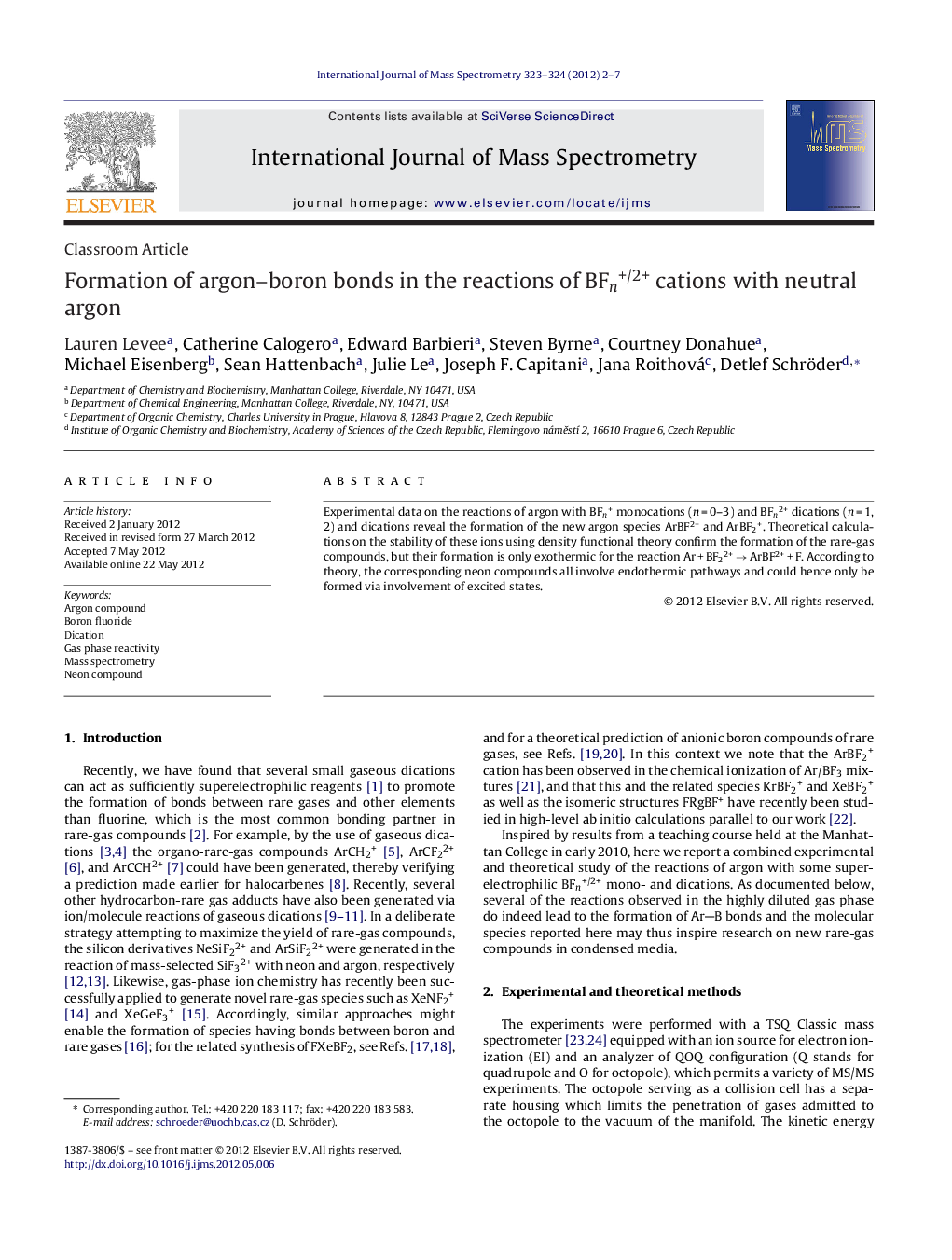| Article ID | Journal | Published Year | Pages | File Type |
|---|---|---|---|---|
| 1193110 | International Journal of Mass Spectrometry | 2012 | 6 Pages |
Experimental data on the reactions of argon with BFn+ monocations (n = 0–3) and BFn2+ dications (n = 1, 2) and dications reveal the formation of the new argon species ArBF2+ and ArBF2+. Theoretical calculations on the stability of these ions using density functional theory confirm the formation of the rare-gas compounds, but their formation is only exothermic for the reaction Ar + BF22+ → ArBF2+ + F. According to theory, the corresponding neon compounds all involve endothermic pathways and could hence only be formed via involvement of excited states.
Graphical abstractFigure optionsDownload full-size imageDownload high-quality image (103 K)Download as PowerPoint slideHighlights► Ion/molecule reactions of BFn+/2+ cations promote the formation of argon–boron bonds. ► Combined experimental and theoretical study of Ar·BFn+/2+ species. ► Theoretical predictions for neon–boron compounds.
